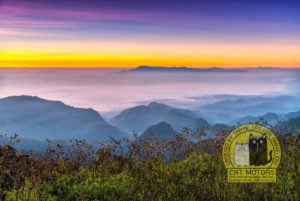Chiang Rai Blue Temple – Explore Wat Rong Suea Ten
When talking about landmarks in Chiang Rai, most people would think of Baan Dam Museum (Black House) by Thawan Duchanee or Wat Rong Khun (White Temple) by Chalermchai Kositpipat. However, relatively recently there is a new attraction, the Wat Rong Suea Ten (Thai: วัดร่องเสือเต้น, wát rông sĕuua dtên), a Blue Temple in Chiang Rai, located on the banks of the Kok River, east of the city municipality, not very far from the city.

Exploring the cultural depth of Chiang Rai leads us to its magnificent temples. Our dedicated article delves into the Chiang Rai temples, unveiling their architectural grandeur and spiritual significance.
Location: 306, Moo 2, Mae Kok Rd., Tambon Rim Kok, Mueang Chiang Rai, 57100
Google Map: https://goo.gl/1He921XTufWFiLKR8
Plus Code Map: 7MFXWRFR+9M
GPS: 19°55’24.1″N 99°50’30.3″E
Latitude: 19.923437
Longtitude: 99.841688
Opening hours: from 7 a.m. to 8 p.m., everyday
Entrance fee: Free
FB Official Page: RSTBlueTemple
Founder: Putha Kabkaew aka Salah Nok (Thai: พุทธา กาบแก้ว)
Year built: 2016
History of Rong Suea Ten Temple
Around 80-100 years ago, this location was home to an abandoned temple. Elders in the community recount stories from that era, highlighting how sparsely populated the area was, with abundant wildlife, particularly tigers. Travelers passing through often witnessed tigers leaping across the ditches, leading to the name Rong Suea Ten, which translates to Dancing Tiger Ditch. This name was also adopted by the nearby village, now known as Rong Suea Ten Village.
The Blue Temple in Chiang Rai was constructed due to the lack of a local place for residents to make merit and observe religious practices. Previously, during significant Buddhist occasions, villagers were compelled to travel to distant temples, which dispersed the community. In response, the villagers collectively decided to restore this abandoned temple, transforming it into a spiritual center and a site for hosting religious ceremonies during important occasions. This effort not only provided a local place of worship but also strengthened the communal bonds among the villagers.

What To See at Blue Temple
The most distinctive feature of this religious complex is the main temple, designed and constructed by local Chiang Rai artist Putha Kabkaew, also known as Salah Nok. After completing his studies, Putha Kabkaew had the esteemed opportunity to become an apprentice to the famous Chalermchai Kositpipat, the visionary behind the renowned Wat Rong Khun, also known as the White Temple. During this time, he assisted Chalermchai in building the White Temple and absorbed extensive knowledge about Buddhist art from his mentor, to the extent that he is often regarded as Chalermchai’s protégé.
The construction of the main temple of Wat Rong Suea Ten began on October 27, 2005. This impressive structure measures 13 meters in width and 48 meters in length. After more than 11 years of meticulous work, the temple was completed on January 22, 2016. Putha Kabkaew’s creation reflects a deep respect for traditional Thai artistic motifs, while also incorporating innovative techniques and modern interpretations, standing as a testament to the evolving nature of Thai Buddhist art and his own distinctive artistic vision.
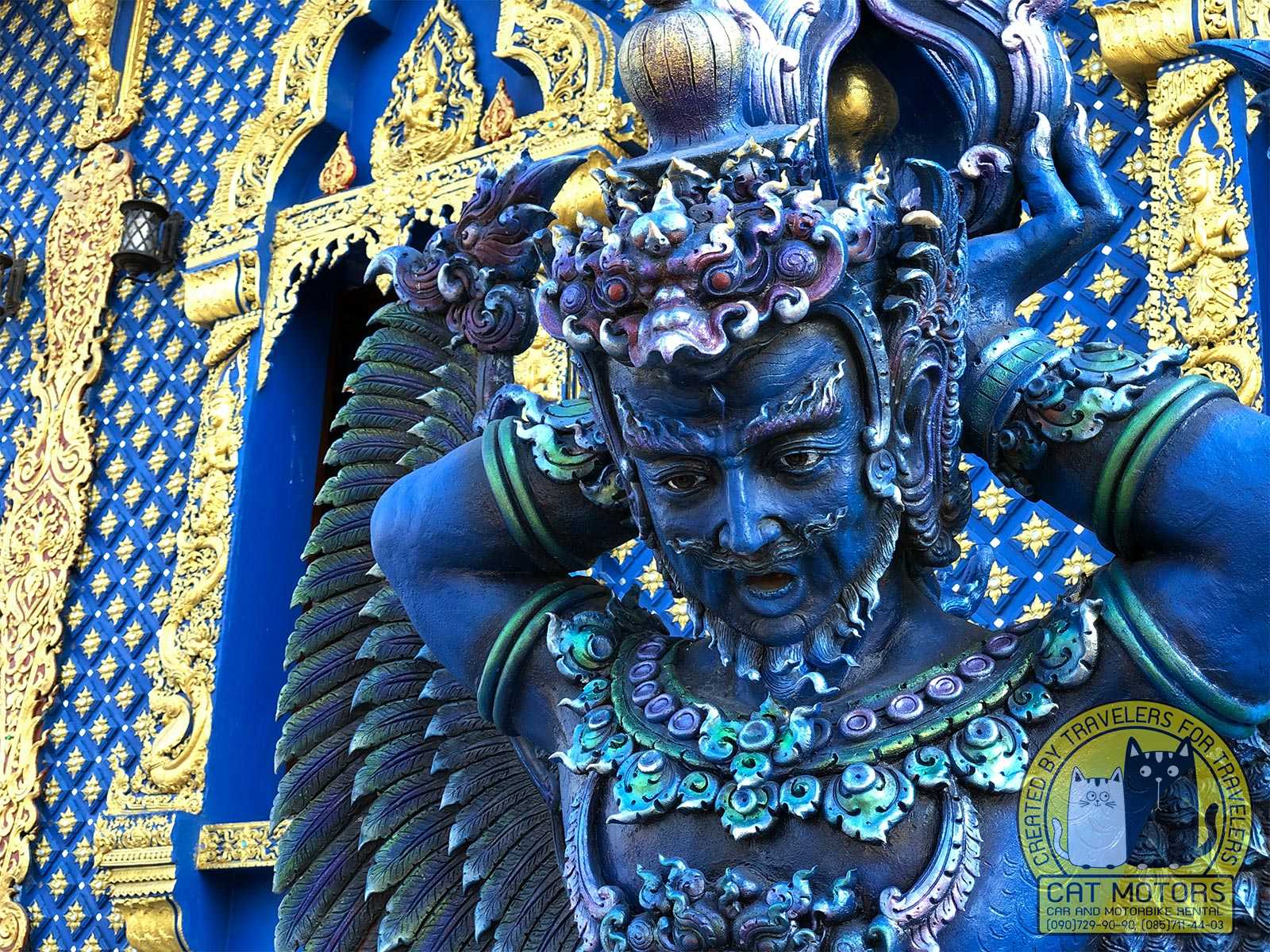
The primary color tone used is cerulean blue with gold contrast helps make the temple stand out. The cerulean blue color represents the virtues of the Buddha, spreading all knowledge proven true through the principle of cause and effect across the world, akin to a bright open blue sky. Contemporary Buddhist art reflects the dharma of the Buddha.
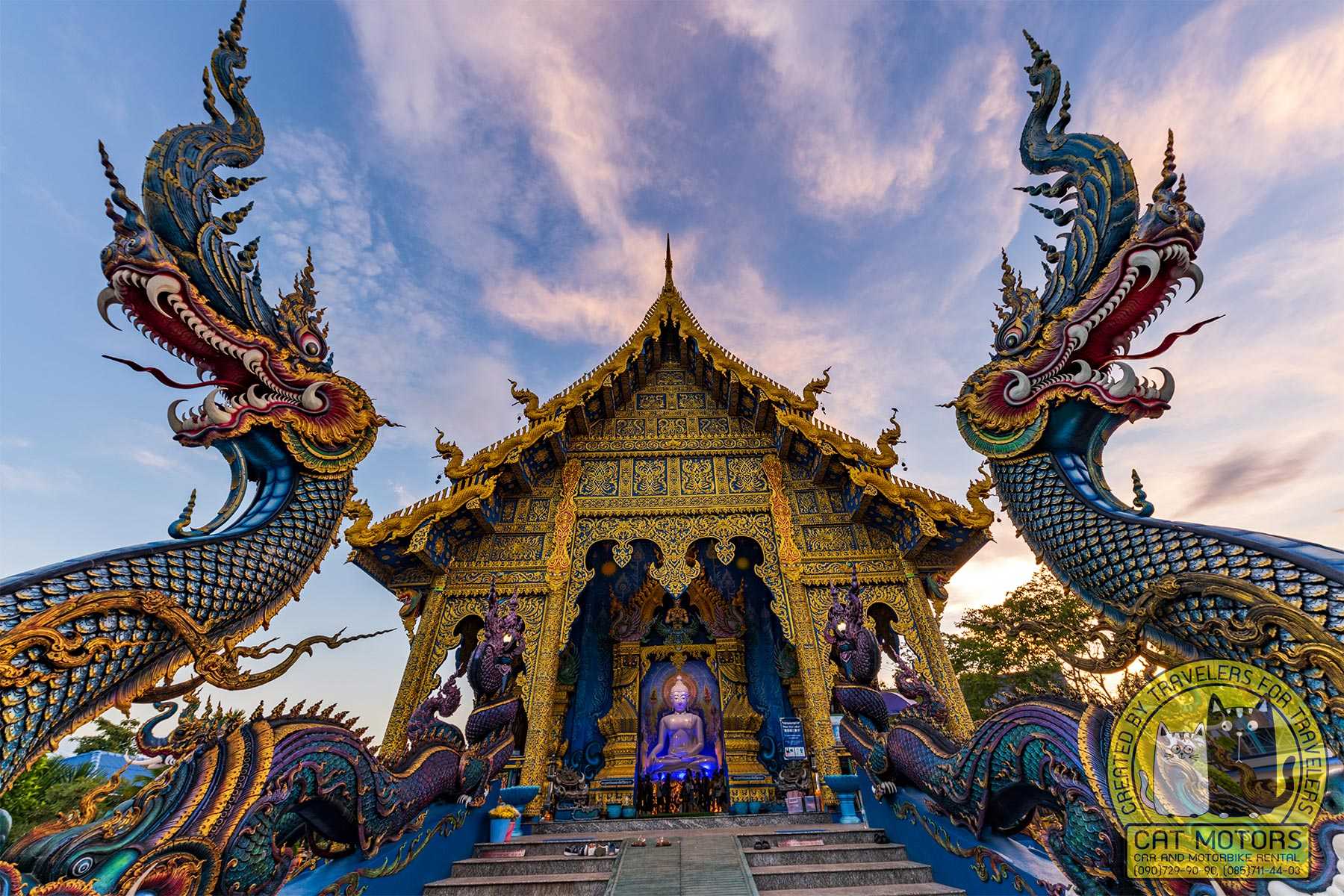
As for the Nagas in front of the temple, Salah Nok was inspired by the works of the artist Thawan Duchanee, which focus on presenting a firm structure and fearsome claws, yet also displaying the delicateness in Lanna style.
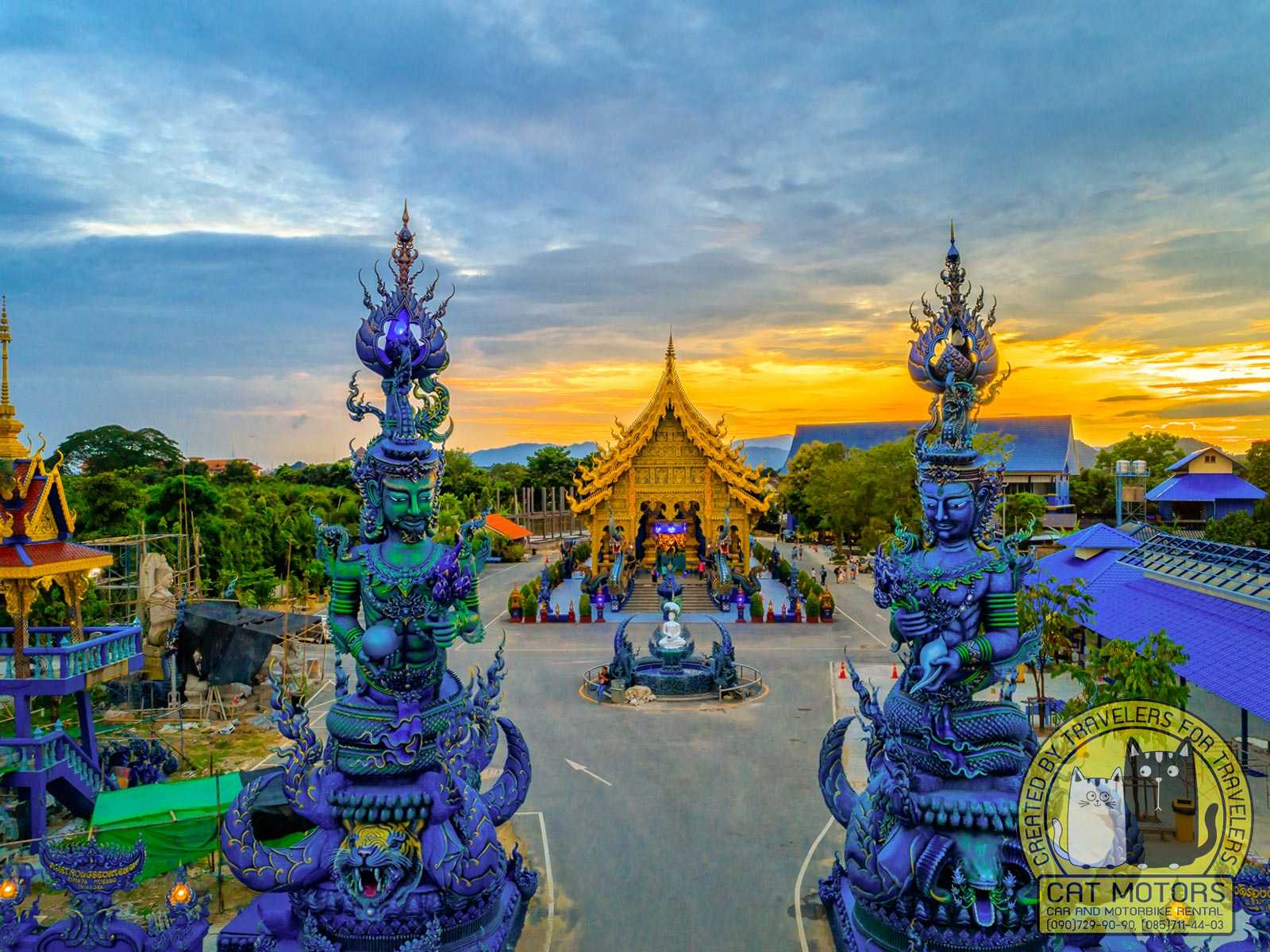
Within the temple situated the Phra Buddha Rajamongkol Bodhi Trilokanat, a white Buddha statue about 5 meters wide and 6.5 meters tall.
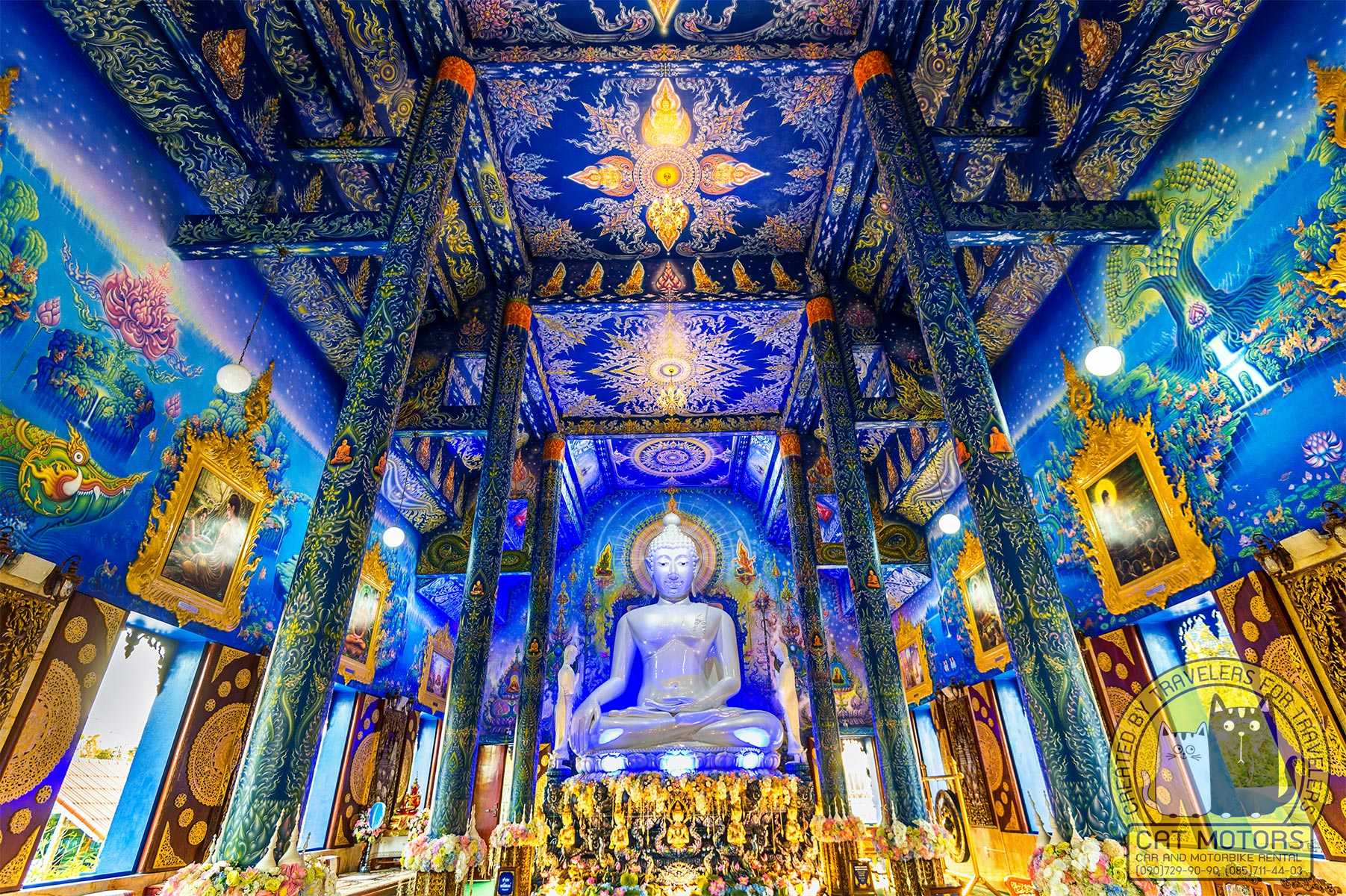
The name Rajamongkol Bodhi Trilokanat (รัชมงคลบดีตรีโลกนาถ) is the name given to the piece of Buddha relic that is contained within the head of the white Buddha statue mentioned in the guide. It means Buddha, the lord of fortune in kingship, a champion of the three worlds. The champion part could also be interpreted as one who is dependable as well.
There is a total of 88 thousand Phrarod Lamphun amulets and various treasures buried underneath the statue. The head of the statue also contains a Buddha relic, which was gifted by Somdet Phra Sangharaja Chao Krommaluang Vajirañāṇasaṃvara and named Rajamongkol Bodhi Trilokanat (literal translation from Thai – Buddha who is the Lord of fortune in kingship, a champion of the three worlds).

Somdet Phra Sangharaja Chao Krommaluang Vajirañāṇasaṃvara (สมเด็จพระญาณสังวรสมเด็จพระสังฆราช สกลมหาสังฆปริณายก) is the name of a former Supreme Patriarch of Thailand. The Supreme Patriarch was the head of the order of Buddhist monks in Thailand, and he was the 19th person who held the title.
The walls are decorated with paintings of tales of the Buddha’s history, displaying the delicateness and beauty of the striped patterns. At the back of the temple a white Buddha statue in a pacifying posture.
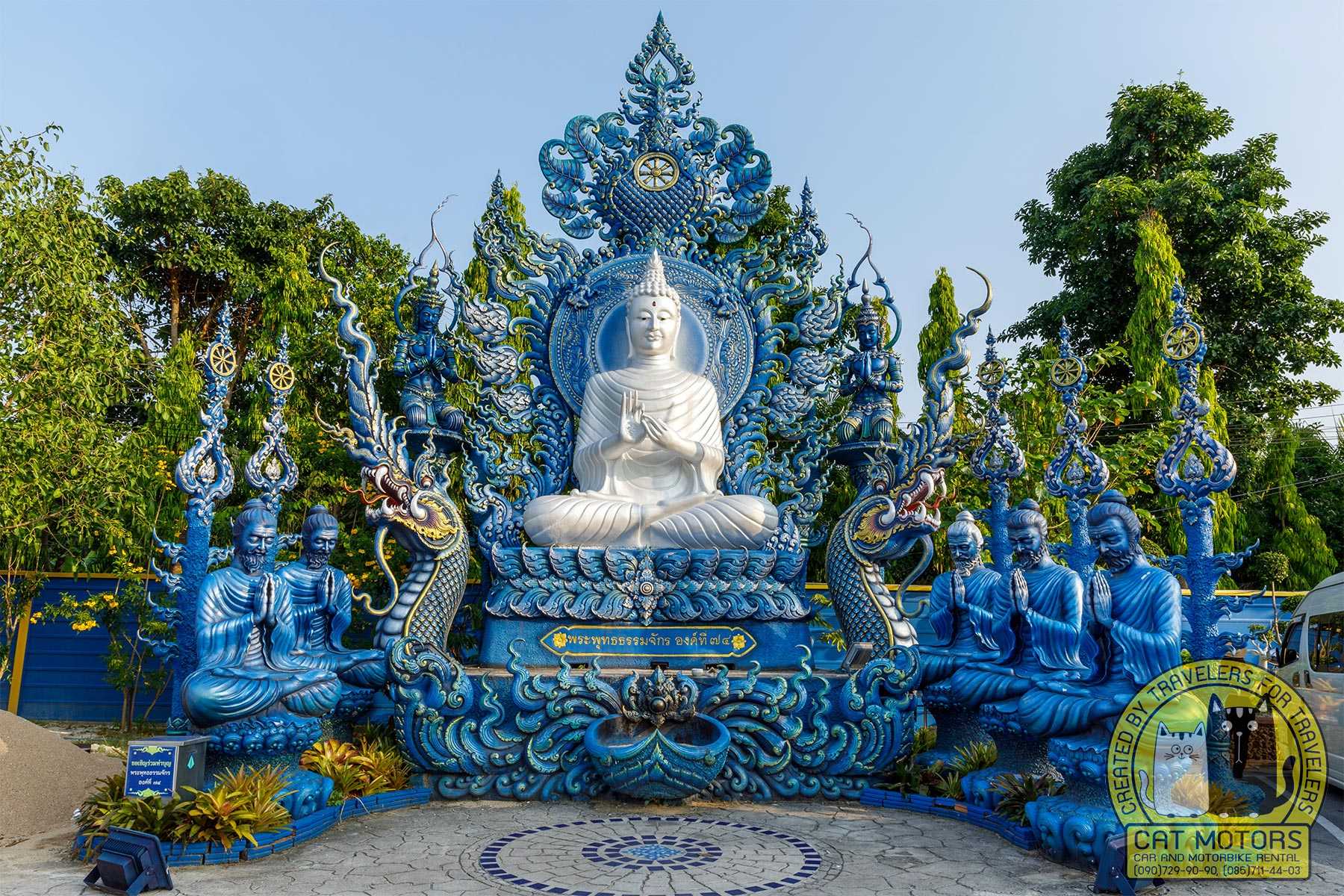
Then there are the 20 meters tall Phra That Ked Kaew Chula Mani. The top of the Phra That contains relics of Somdet Phra Sangaraja Sakolmaha Sangkha Prinayok.
Phra That Ked Kaew Chula Mani is quite complicated if translated literally. Phra That means Buddha’s relics, Ked means hair, and Kaew could be interpreted as valuable, Chula could mean top of the head, and Mani means gem.
Together, the name could be translated as Buddha’s head hair relic, which would sound pretty weird if translated literally. The gist is that the building called that name contains that particular Buddha relic inside, which is why the entire building is referred to by that name.
Wat Rong Suea Ten was constructed from the faith in Buddhism and the desire to carry on the Buddhist arts of Salah Nok, who was inspired by the works of his teachers Thawan and Chalermchai, resulting in a stunning temple.
Don’t forget to visit Singha Park if you travel to Chiang Rai.

Dress Code
Visitors to the Blue Temple are expected to follow a specific dress code, which is in line with the customs observed at all temples in Thailand. This dress code is deeply rooted in Buddhist cultural values and the respect afforded to sacred spaces. For those who arrive unprepared, numerous vendors on site offer wraps, sarongs, and cover-ups to ensure compliance.
Men are required to wear shirts or T-shirts with sleeves that cover the shoulders, as tank tops are considered too casual and disrespectful in this context. Shorts are permissible, provided they extend beyond the knees. The rationale behind this is to maintain modesty, as exposing too much skin is seen as inappropriate in a place of worship.
Women must adhere to similar guidelines. They should avoid leggings or sweatpants, as these are considered too form-fitting and informal. Instead, they should opt for attire that covers the shoulders and knees. Moreover, clothing with rips, low waistlines, exposed midriffs, or sheer fabrics is strictly prohibited. This is because such attire can be seen as provocative or disrespectful in the sacred environment of a temple.
The emphasis on modest clothing is not merely about tradition but also about showing reverence and humility in the presence of the Buddha and the sacred artifacts housed within the temple. By dressing modestly, visitors demonstrate their respect for the spiritual significance of the temple and the cultural heritage it represents. This practice is an essential aspect of the visitor experience, ensuring that the sanctity of the temple is preserved and respected by all who enter.
How to get to the Blue Temple Wat Rong Suea Ten
From Chiang Rai
From Chiang Mai
Fastest
The fastest way to get to the Blue Temple from Chiang Mai is to rent a car or motorcycle or take a cab.
The cost of a taxi service is approximately 2000-3,000 baht. The travel time is about 3 hours.
You can also book a long-distance trip with the apps we mentioned above. Be sure to check the rates on both apps because prices change all the time. For example, at the time of this post, Grab is offering a car service for 2,396 baht, while InDriver is showing a price of 1,730 baht. But sometimes Grab offers a lower fare. Check it out.
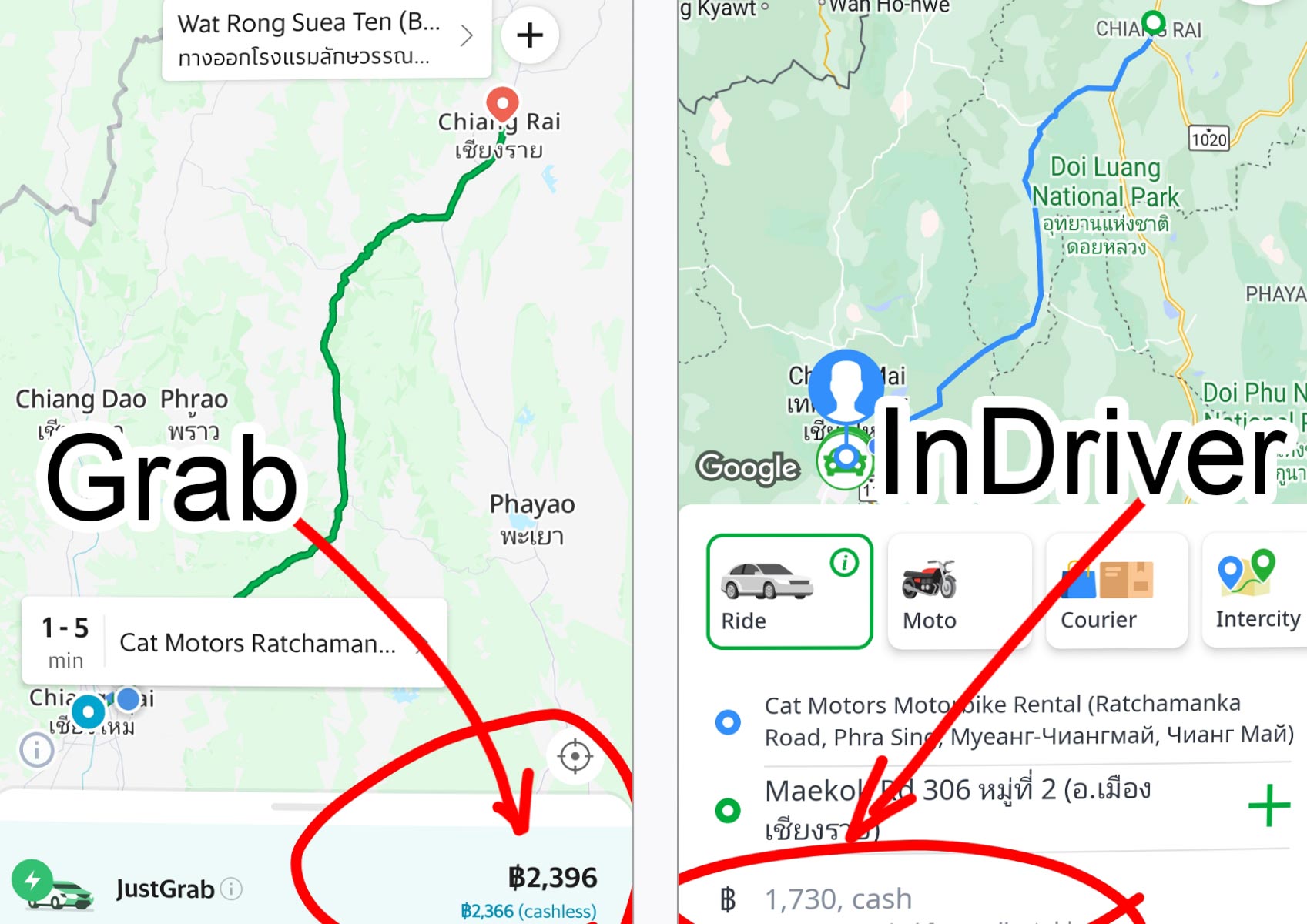
Cheapest
If you are a frugal traveler and prefer public transportation, you can travel to the Blue Temple a little cheaper, but note that a one-way trip can take about 4-8 hours.
First, you must arrive at Chiang Mai Bus Terminal 2, where a bus leaves every 4 hours for Chiang Rai. The cost is about 150-250 baht, depending on the comfort level of the bus. Travel time is 4 hours. Add to this time up to 4 hours of waiting at the bus station.
Then, when you arrive in Chiang Rai, you will need to hire a cab that will take you to the Blue Temple in just 5 minutes. The cost is only 60-80 baht. Use the Grab or InDriver apps we mentioned above.
Recommended
This method is the golden mean. The trip takes 3 and a half hours and costs about 1100 baht.
You first need to get to Chang Phuak bus station, from where the yellow songthaew leaves hourly for Wiang Kalong (Thai: เวียงกาหลง, wiiang-gaa-lŏng). The travel time is about 2 hours. The cost of the trip is 100 baht.
Then after hiring a cab in Wiang Kalong for 1,000 baht and spending about an hour and a half on the road, you will get to the Blue Temple.
Map & Directions
If you are traveling on your own, then we recommend using Google Map for your trip. This works even if you don’t have internet access, as long as you download a map of the area to your phone beforehand.
Weather Forecast
The most accurate weather forecast in a given region is always predicted by Meteoblue.
If you’re planning to vacation in northern Thailand for a few days and are still pondering what sights you want to see, then take a look at our online Chiang Mai attractions guide.
YT Review
Thailand's Most Under Rated Temple
World's Only Blue Temple
FAQ
The Blue Temple (Wat Rong Suea Ten) in Chiang Rai was painted predominantly blue by the artist Putha Kabkaew to represent the heavenly heavens of Buddhism. The intricate designs in the temple also symbolize the culture and history of the Lanna people.
The Blue Temple (Wat Rong Suea Ten) was built in 2016 by the artist Putha Kabkaew. The only thing we know about the previous temple building is that about 100 years ago, when the local community decided to renovate it for religious ceremonies, it was an abandoned and dilapidated unnamed temple.
The architect of the blue temple is the famous local artist Putha Kabkaew, also known as Salah Nok, a disciple of the great artist Chalermchai Kositpipat, who built the famous white temple here in Chiang Rai.
The temple is located in Northern Thailand, Chiang Rai province, about 5 kilometers from Mae Fa Luang International Airport. If you arrive in Chiang Rai by plane, you can see this temple from the plane window.
The address of the Blue Temple is: 306, Moo 2, Mae Kok Rd., Tambon Rim Kok, Mueang Chiang Rai.
Google Map: https://goo.gl/1He921XTufWFiLKR8
The distance between the temples is about 16 kilometers, about 25 minutes of travel, considering traffic jams and traffic lights. Therefore, it is most convenient to see the White Temple first, then the Blue Temple, and then the Black House, after which you can drive around and see other local attractions.
Nearby you will find waterfalls, caves, famous temples and museums, mountaintops, and countless delightful views of the surrounding area. For more on all the major attractions in the area, check out our Chiang Rai travel guide.
The Blue Temple (Wat Rong Suea Ten) in Chiang Rai is located just 6km from Chiang Rai city centre. The easiest way to get to the temple is to take a taxi from Chiang Rai city centre or take a tuk-tuk or songthaew. You can also rent a motorbike or car and drive there. The temple is open daily from 7am until 8pm.
Explore Northern Thailand’s stunning landscapes and vibrant culture with our comprehensive travel guides. Highlighting the best scenic routes and local attractions, our guides ensure you experience the best the region has to offer. Start by visiting our motorcycle rental in Chiang Mai. Be sure to review our terms and conditions for a seamless experience. With these resources, you can explore mountain trails and charming villages with confidence.
Our travel advice sections offer essential tips on staying safe and enjoying your trip to the fullest. Discover the best times to visit major attractions, learn about local festivals, and find out how to handle different road conditions. These insights will make your journey richer and more enjoyable. Join us in uncovering the breathtaking beauty and rich culture of Northern Thailand, ensuring a safe and memorable adventure.
Was this post useful for you?
You can rate it by clicking on a star
Average rating / 5. Vote count:
No votes so far! Be the first to rate this post.
We are sorry that this post was not useful for you!
Let us improve this post!
Tell us how we can improve this post?
- Author: Natcha Lindberg
- Updated: March 26, 2025
- No Comments



